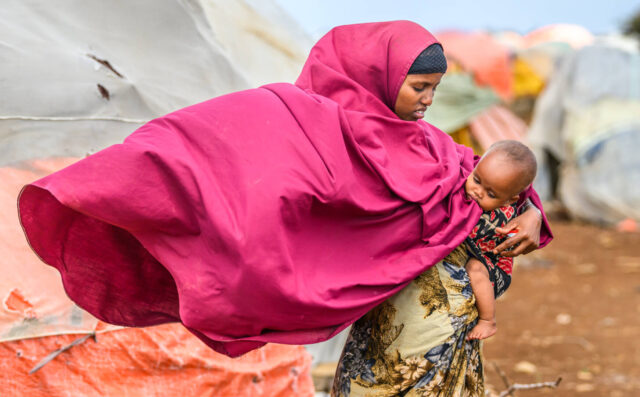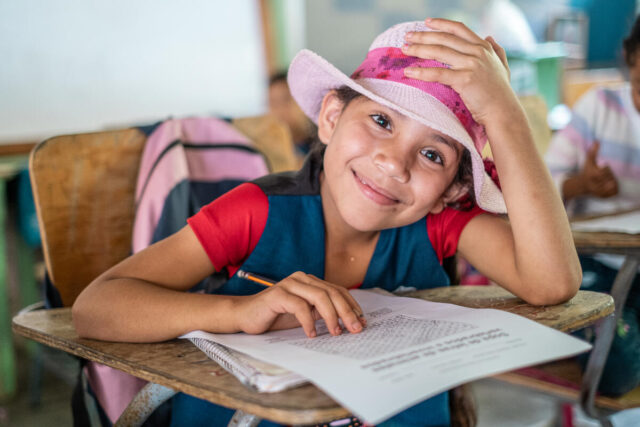Today’s story comes from western Afghanistan, a region with one of the highest under-5 mortality rates and where maternal death in childbirth is a serious concern. The 10×10 film “Girl Rising” shows how these issues affect women in Afghanistan and how education can help them.
* * *
Before World Vision started its community midwife program in Afghanistan’s Ghor province, there were no midwives among a population of more than 800,000.
As of 2012, with 38 midwives now working in Ghor province, a result of World Vision’s program, 85% of health facilities were staffed with one.
Shukria was only 15 when she gave birth to her first child, never dreaming she might become a midwife.
But a close family member’s death in childbirth — when an unskilled traditional birth attendant mistakenly removed her womb instead of her placenta — inspired Shukria to be trained as one. Now, at 32, she is saving lives, and her daughter is following in her footsteps.
Sadly, death in childbirth is all too common across Afghanistan. In Ghor and Badghis provinces in western Afghanistan and Herat district in the northwest, a woman dies every 43 births in pregnancy, labor, or after childbirth. That’s 1,244 women a year.
In 2011, Save the Children declared Afghanistan “the worst place in the world to be a mother.” In 2012, Afghanistan was second-to-last.
Dr. Sarah Pickworth, formerly World Vision’s public health specialist in Afghanistan, reports that many women die needlessly due to a lack of basic healthcare during pregnancy. Their diets are poor and they perform hard physical labor in the fields while pregnant, which leaves them further unprepared for childbirth.
Without a trained midwife, many mothers die either because of an error or a delay in receiving medical attention. Women are still required to receive their husband or mother-in-law’s permission to get help.
Now, through World Vision’s community midwife program, Shukria and hundreds of other World Vision-trained midwives in western Afghanistan are making a difference. They teach mothers that instead of feeding their newborns sheep oil or sugared water, their own milk is best for their babies because it contains all the nutrients and antibodies infants need in their first few months of life.
Midwives also encourage new mothers to plan their pregnancies. Without spacing deliveries, women have many children, which can lead to anemia and increased mortality during childbirth. Also, since most people in this part of the country are poor, the fewer children a mother has, the better she will be able to educate them.
World Vision also trains community outreach teams, each comprised of a man and a woman, which work to raise awareness with parents and break down the barriers that prevent women from receiving care. Early treatment of pregnancy and childbirth complications, as well as encouraging women to deliver in health facilities, saves lives.
Dr. Pickworth notes that the attention of a midwife helps infants too. Midwives see newborns in their first week of life, which is the most vulnerable time. Illnesses in infants are then more quickly diagnosed, allowing treatment to be more successful.
In addition to delivering babies and educating mothers, Shukria also trains women how to clean and cook new varieties of vegetables to nourish themselves and their children.
“A community health promoter referred 15 children to me,” Shukria says. “I checked the weight and height of each and referred five of the children to the hospital with severe malnutrition. One later died. The other children improved after we worked with their families and advised them about foods for their children.”
By introducing hygiene practices, like handwashing after using the latrine, separating water used for humans and livestock, and encouraging immunization, midwives and community health promoters that World Vision trains are also striving to reduce the terrible odds against child survival.
Despite progress in recent years, Afghanistan continues to have one of the highest under-5 mortality rates in the world. These deaths are caused by preventable pregnancy-related complications, preventable childhood illnesses like diarrhea and pneumonia, neonatal complications, and malnutrition — which together account for more than 60% of child deaths.
Midwives in Ghor province — one of the poorest, most isolated parts of the country — are seeing the numbers of malnourished children decrease. But the hospital and community-trained midwives are just one important link in a developing plan that is quickly gaining the support of community leaders.
Over the past year, with the help of a local aid agency, nearly 300 people have been trained in basic health, monitoring the nutrition of more than 20,000 mothers and children each month. More than 90,000 mothers and fathers currently attend these health groups across five districts.
Initiatives like these demonstrate that change is possible. But while there are more doctors and midwives now than there were a decade ago, so much more needs to be done.
In Ghor province alone, there are only seven midwives per 100,000 women. Existing programs must be scaled up if Afghanistan is to halve the maternal mortality rate for the Millennium Development Goal of 2015.
World Vision, together with local and international partners, is committed to improving mother and child health in Afghanistan so that children not only survive the first five years of life — but enjoy good health for many years thereafter.
Every 30 minutes, an Afghan woman dies of childbirth-related complications. In fact, tragically, almost half of all deaths of women age 15 to 49 in Afghanistan result from complications during pregnancy and childbirth. Most of these deaths could be prevented with increased access to maternal health services.
Make a one-time donation to support maternal health in Afghanistan. Your gift will help provide training for midwives, prenatal and ongoing medical care for mothers and children, improved nutrition, immunizations, and other critical interventions for those in need in a place where being a mother is difficult — and sometimes deadly.
Request a screening of “Girl Rising.” Directed by Academy Award nominee Richard Robbins and narrated by world-class actresses including Meryl Streep, Anne Hathaway, Kerry Washington, and Selena Gomez, “Girl Rising” tells the stories of extraordinary girls faced with unforgiving circumstances.




Comments